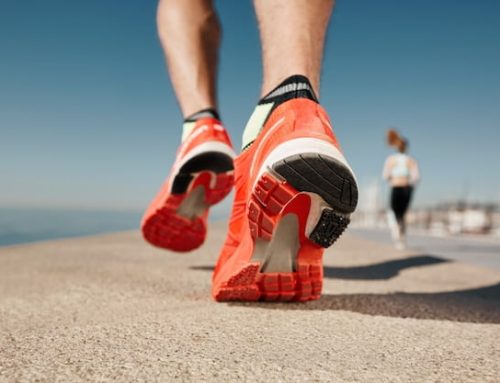Introduction
Losing belly fat is one of the most common fitness goals for many people. While there are numerous exercises, diet plans, and supplements that claim to help you lose belly fat, most of these methods are often not effective. However, running has been shown to be one of the few exercises that can reduce belly fat. One common question among people who want to lose belly fat is whether running two miles a day will help them achieve their goal. In this article, we will explore the relationship between running two miles a day and belly fat loss.
What causes belly fat?
Before discussing how running can reduce belly fat, it is important to understand what causes belly fat. Belly fat is often caused by an accumulation of visceral fat, which is the type of fat that is located deep within your abdominal cavity surrounding your organs. Visceral fat is dangerous because it can increase the risk of developing type 2 diabetes, heart disease, and other health problems.
How running can reduce belly fat?
While running alone cannot spot reduce belly fat, it can help reduce overall body fat percentage, including visceral fat. Running burns calories, and if you maintain a calorie deficit, you will lose body fat, including belly fat. A study published in the Journal of Obesity found that running for 30 minutes, four times a week, for 12 weeks, can reduce visceral fat by 8.6%.
How do you run to lose weight?
Rule 1: warm-up
Regardless of your fitness level and how much time you intend to devote to your running workout, start by doing a 10-minute warm-up (this can include jumping jacks, squats and bends). Then march for 5 minutes before starting to jog, gradually increasing your running pace.
Rule 2: run slowly
To lose weight, you need to run slowly. This is because fat is best burned around 60-70% of our maximum heart rate range, which is when our body is not working very hard. Running in this heart rate zone will speed up your metabolism and therefore fat burning.
This is why a heart rate monitor is useful during your workout – a device that will indicate your exact heart rate and thus let you know when you should run faster and when you should slow down to be in a certain heart rate zone. Don’t have a heart rate monitor? Invite someone to your workout who you can talk to while you run. Your running pace should allow you to talk without much effort. If you appear breathless during the conversation, it means you are running too fast.
Rule 3: run for a long time
Beginner runners should start with short, 30-minute workouts and gradually increase the duration to an hour (or even two). Everyone has a different metabolism and uses energy resources differently, but it is accepted that the body starts to burn fat after about 20 minutes of training. In the initial phase of exercise, at lower heart rates, the body draws 80% of its energy mainly from glycogen stored in the muscles and liver. The remaining 20% of energy comes from adipose tissue. After about 20 minutes, the glycogen reserves begin to deplete and the given proportions reverse and the body begins to burn fat tissue intensively.
Rule 4: You can combine slow running with sprinting
A sprint is an excellent variety to a monotonous hour-long run. However, it is important to remember that during intensive running training, muscle mass and so-called running strength is gained, not fat burned. Therefore, you can do about eight 20-second sprints during an hour-long run.
Rule 5: Run regularly
Workouts should take place regularly, preferably every day, and be of short duration (about an hour). Remember that less frequent but longer running training (e.g. three days a week of 1.5 hours each) is less effective.

A lightweight shoe with a breathable mesh upper, it offers enhanced cushioning around the ankle for added comfort. The shoe is made of synthetic materials, has a lace-up closure, and a heel height of 1 inch.
Is running two miles a day enough?
The amount of running required to lose belly fat varies from person to person. Running two miles a day is a good start, but it may not be enough to see significant results. The number of calories you burn during exercise depends on factors such as your weight, age, and exercise intensity. According to the American Council of Exercise, a 150-pound person can burn approximately 170 calories by running two miles in 20 minutes. However, if you want to see more significant results, you may need to increase your running duration or intensity.
Other benefits of running
Aside from reducing belly fat, running has numerous health benefits. Running can improve cardiovascular health, lower blood pressure, reduce the risk of some cancers, and improve mental health. Running can also help you sleep better, improve bone health, and increase metabolism.
Conclusion
In conclusion, running two miles a day can help reduce belly fat, but it may not be enough for significant results. Running can reduce overall body fat percentage, including visceral fat, which is the type of fat that is located deep within your abdominal cavity surrounding your organs. However, the amount of running required to lose belly fat varies from person to person, and it may require a more intensive exercise plan. Additionally, running has numerous health benefits, including improving cardiovascular health, reducing the risk of some cancers, and improving mental health. So even if you do not see significant results in reducing belly fat, running can still have positive impacts on your overall health.
| Weight | Calories burned during 2-mile run |
|---|---|
| 130 lbs | 148 calories |
| 150 lbs | 170 calories |
| 180 lbs | 204 calories |






